We went on another RV learning experience journey this week, finding history in the Piney Woods. We never really get in much of a hurry, so left home around midday for our two-night excursion. Steve and I made minimal plans but did have a travel route mapped out with specific sites we wanted to see.
In our recent travel, we have encountered the El Camino Real de Los Tejas National Historic Trail (The Royal Road of the Tejas Indians) more than once, and our interest in this Historic Trail is how this particular trip came about.
Also located along this historic route is Presidio La Bahia (Enjoy Texas History? You’d love a visit to Presidio La Bahia!) and the missions in San Antonio (San Antonio Missions National Historical Park – a UNESCO World Heritage Site).

As you can see from this map, there are many miles of this Historic Trail to travel along.
What is a National Historic Trail (NHT)?
https://www.nps.gov/elte/learn/what-is-a-national-historic-trail-nht.htm
A National Historic Trail is a long-distance route that follows and commemorates a historic path of travel that changed the history and character of the U.S. Today the route offers opportunities to visit surviving sites, trail segments, and defining places of history and learn about the diverse stories they tell.
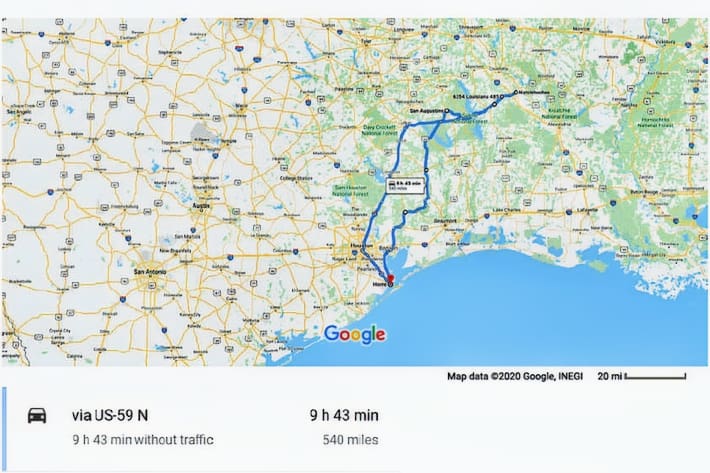
This Google map shows how we followed this Historic Trail along, more or less, on our route to San Augustine, Texas, Natchitoches, Louisiana, Robeline, Louisiana, and Fort Jesup State Historic Site near Many, Louisiana.
Mission Dolores State Historic Site
701 South Broadway St.
San Augustine, TX 75972
936-275-3815
GPS: 31.52413N,-94.11355W
missiondolores@thc.texas.gov
Mission Dolores offers overnight camping at 32 campsites
All sites are full hook-up (30 amp), paved, and back-in sites.
To reserve call 936.275.3815
Campsite Rental Fees – Water/Electric/Sewer $24/night
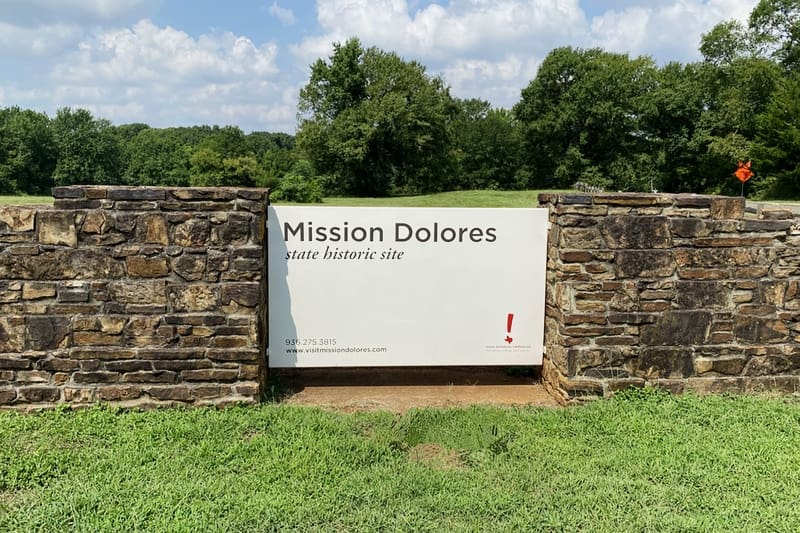
I recently read a bit about the history of Mission Dolores, named a historic site not too many years ago, and thought this would be an enjoyable place to visit. Steve and I both enjoy these little historical nuggets we come across.
In 1721 a Spanish mission, Nuestra Señora de los Dolores de los Ais, or simply Mission Dolores, was built in what is now San Augustine.
The mission site is across the street from the RV park we spent the night at, but, unfortunately, the museum is not available to visitors now.
Although there are no above-ground remains of the mission, the mission site was confirmed in 1976 and is included in the National Register of Historic Places and is designated a State Antiquities Landmark. The town of San Augustine was once a busy stop on El Camino Real de los Tejas Trail.
The mission was not very successful in its objective to convert the Ais Indians to Christianity, but it was part of a successful settlement for about 50 years. Mission Dolores was an unusual example of cooperation and acceptance among the Spanish priests, soldiers, settlers, French traders, and local Indians. We will return someday to visit the museum, I am sure.
San Augustine
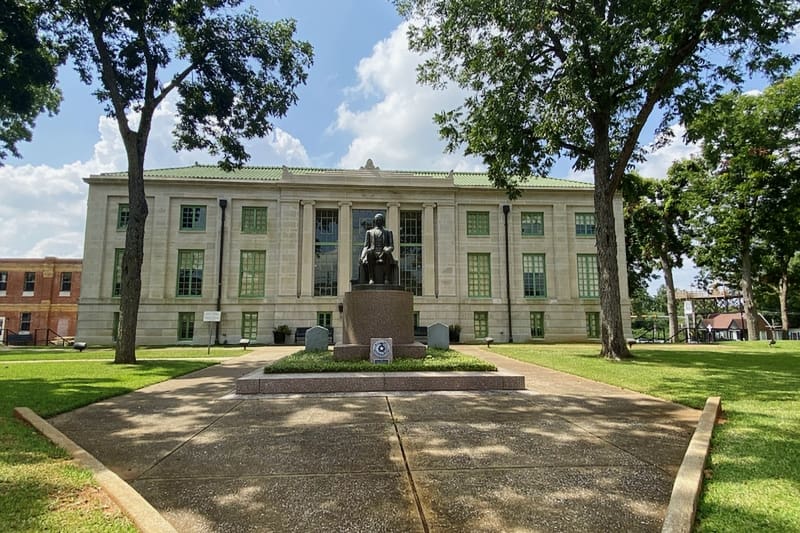
San Augustine County Courthouse
It just so happens that San Augustine is another of the small towns in Texas that my family called home for a while. However, the focal point of San Augustine is a beautiful and recently restored County Courthouse in the middle of the town’s square, surrounded by inviting looking shops
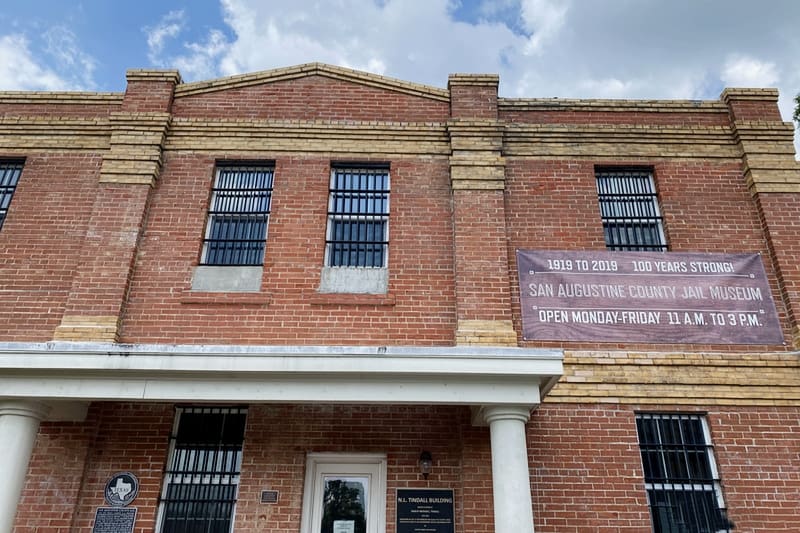
The Old Jailhouse Museum caught my eye as we drove by, so we stopped and went inside to take a look. The old jailhouse building is over 100 years old and contained important information about law enforcement history in San Augustine. I was very fortunate to spend a few minutes talking with Earline Boyd, the friendly and welcoming curator in the museum at the time of my visit.
Earline Boyd shares some San Augustine’s history on display at the County Jail Museum. She was a joy to visit with and is a great representative of San Augustine.
Lobanillo Swales
State Hwy. 21
2 miles west of Geneva, Texas
GPS coordinates 31.477990, -93.949268
A highway sign marks the turnoff to this beautiful spot in the trees. We found a small parking lot just a few feet after we turned that was large enough for our RV to park in and then back out of, but it would have been a bit sketchy to accomplish if other vehicles had been parked there.
This is a new thing for me, always having to be aware of the space we require to maneuver. This is easy and familiar for Steve, but not for me!

First of all, I had no idea what a swale was. The dictionary told me swales are a valley-like intersection of two slopes in a piece of land, precisely as it looks. I encountered swales once before, in Natchez, Mississippi, but I had no idea there was a name associated with these ancient high, sloping roads.
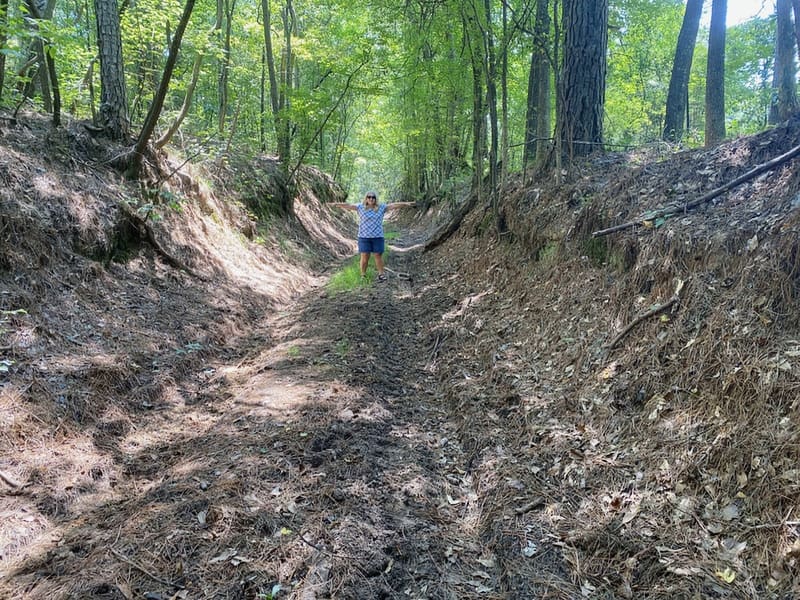
The Lobanillo Swales, made up of seven swales that are up to eighteen feet deep and twelve feet wide, allow visitors to visualize the many many travelers over hundreds of years that traveled these roads. There are no other swales in such a large concentration in any other part of the United States. Artifacts, from the late 1700s through the early 1900s, over three centuries, have been discovered here. What a beautiful sight this was, just off the road in the forest.
Patricia Huffman Smith NASA Museum
375 Sabine St., Unit B
Hemphill, TX 75948
409.787.4827
Tues-Sat 10 – 5
Sun by reservation only
Admission $5 adults / $3 students
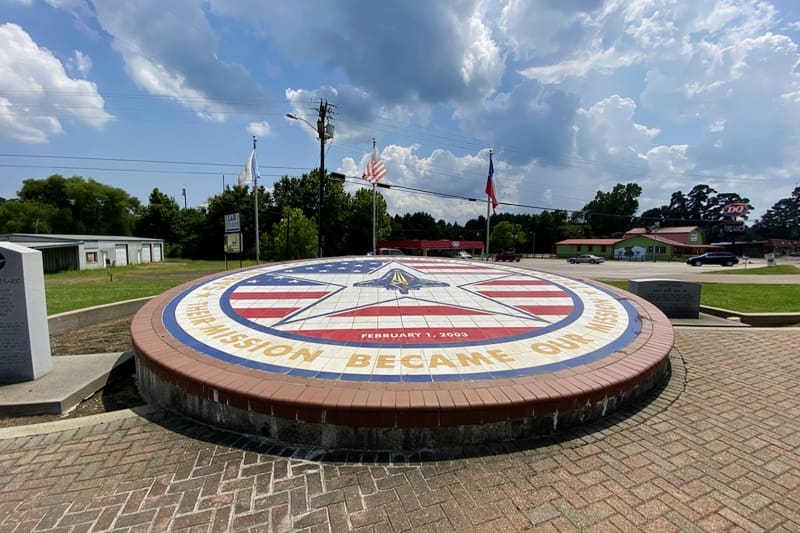
Less than a half-hour drive from San Augustine is Hemphill, Texas, where the Patricia Huffman Smith NASA Museum honoring the Space Shuttle Columbia and its crew can be found.
I am sure you can remember where you were, what you were doing on February 1, 2003, when you first
learned the Columbia had disintegrated on re-entry from Space.
This is a spectacular and moving museum. Of Good Courage, the video we were shown in the museum was one of the most moving I have ever seen. Take a look at the video here, on the Museum’s website.
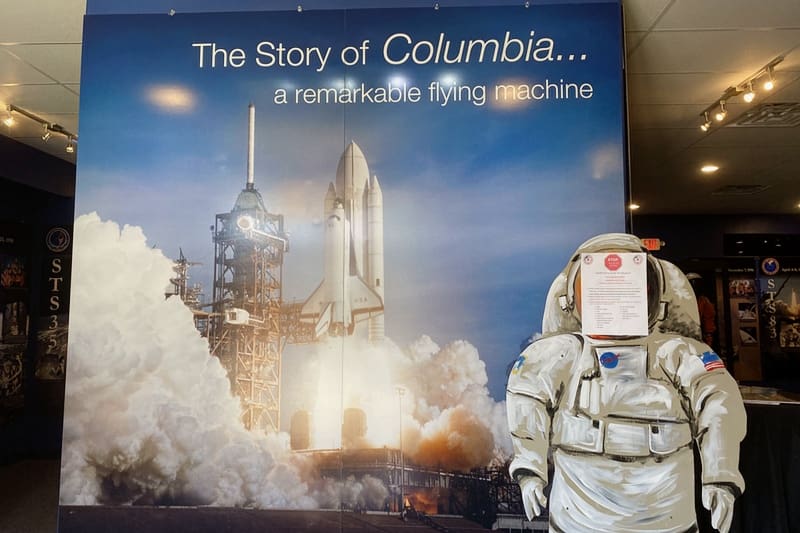
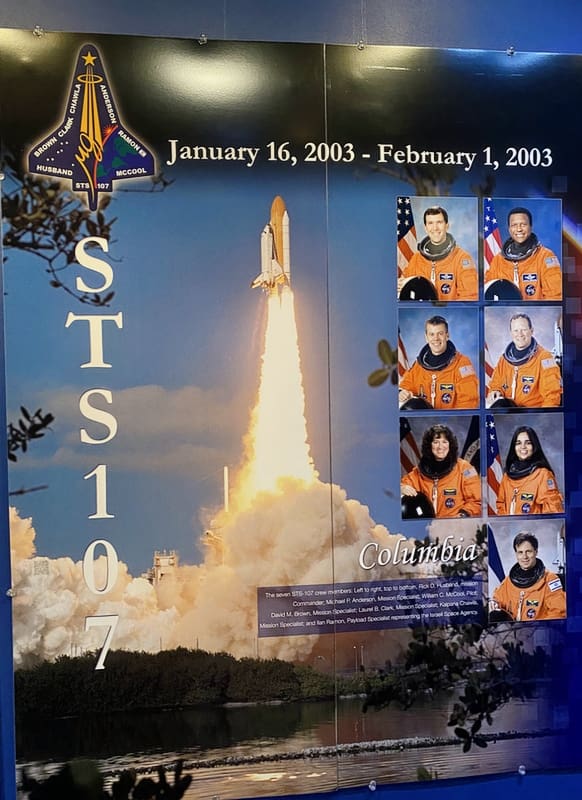

The first capital of Texas
Los Adaes State Historic Site
6354 Louisiana 485
Robeline, Louisiana
By appt. only, 318-357-3101
Admission Free
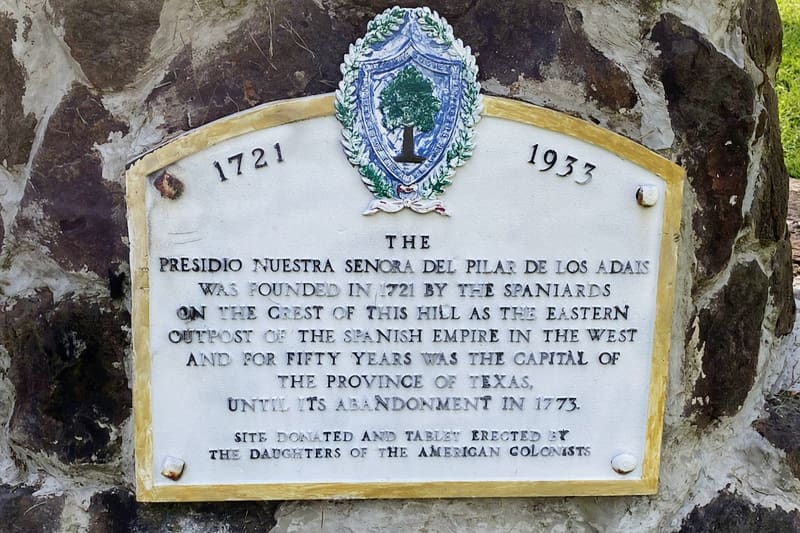

Something else I learned on this little adventure is that the very first capital of Texas was not in Texas at all – it was at Los Adaes near Robeline, Louisiana! And, Adaes was the capital of Texas from 1729 to 1773! The Los Adaes State Historic Site was closed to the public, but I was able to take a photo of the historical marker at the base of the flagpole.
Fort Jesup State Historical Site
32 Geoghagan Rd
Many, LA 71449
318-256-4117
888-677-5378
Museum open Friday-Sunday; grounds open Wednesday-Sunday 9-5
$4 per person
62 and older free
Children 3 and under free
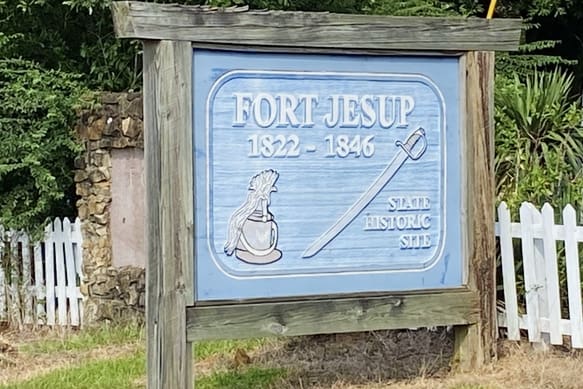

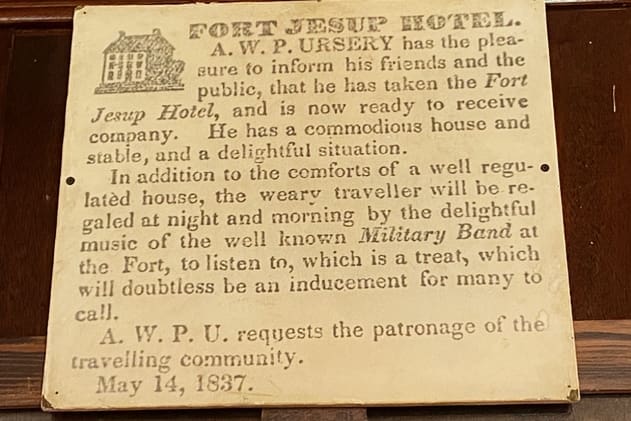
The Louisiana Purchase of 1803 did not define the western boundary of Louisiana, which resulted in a boundary dispute between the U.S. and Spain. A neutral ground was created as a result of that dispute and in this neutral ground, neither the laws of the U.S. nor of Spain were enforced. The dispute was resolved when the Florida Purchase Treaty of 1819 set the boundary at the Sabine River.
Fort Jesup, with Colonel Zachary Taylor as its first commander, was built in 1822 by the United States. Fort Jesup was a relevant military post for almost 25 years, but by 1846 was no longer needed and was abandoned.
A kitchen remains today as the only historic structure, but reconstructed officers’ quarters now house interpretive exhibits and a visitor center. Fort Jesup is a National Historic Landmark.
Fort Jesup was our last planned stop on this trip, and we traveled a bit north to Ajax, Louisiana, where we found a pleasant RV park to spend the night and began our slow meandering drive home the following morning.
We had an enjoyable, slow-moving, scenic driving trip. I am learning that history is in every single nook and cranny of our world.
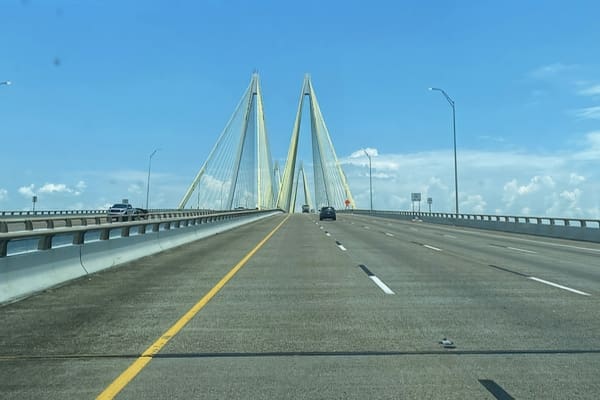

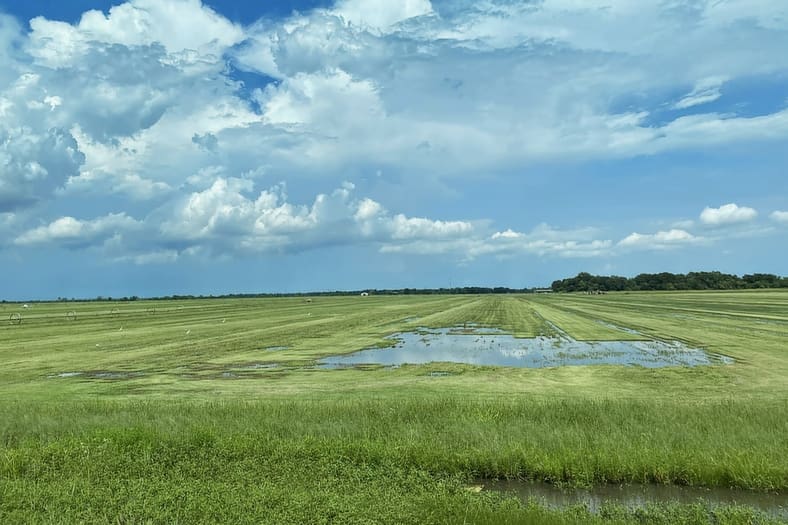

Some of the sights along the way.
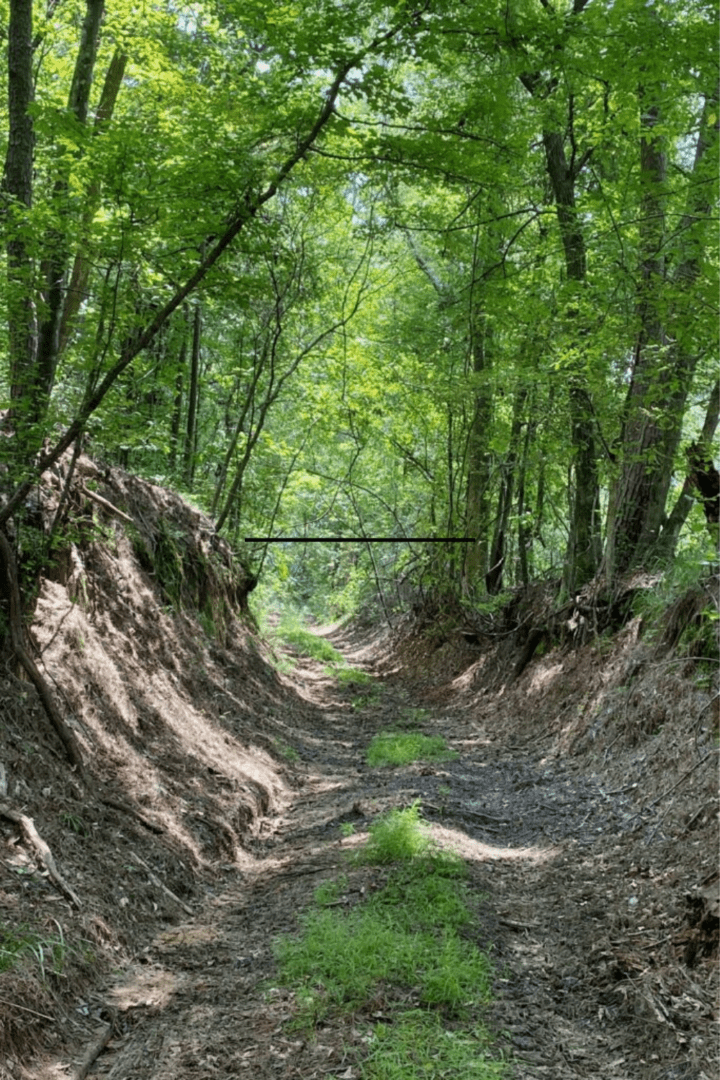
Texas is an old land, and so very versatile with the people who pioneered. People may look back and see us as pioneers. History is our future. Swales.. I have seen this and never thought about how it was that men and women with wagons drawn by various animals made there way across the rough terrain.
Swales was a new word to me. I’d seen them but did not know the name. We love stumbling on these little history nuggets.